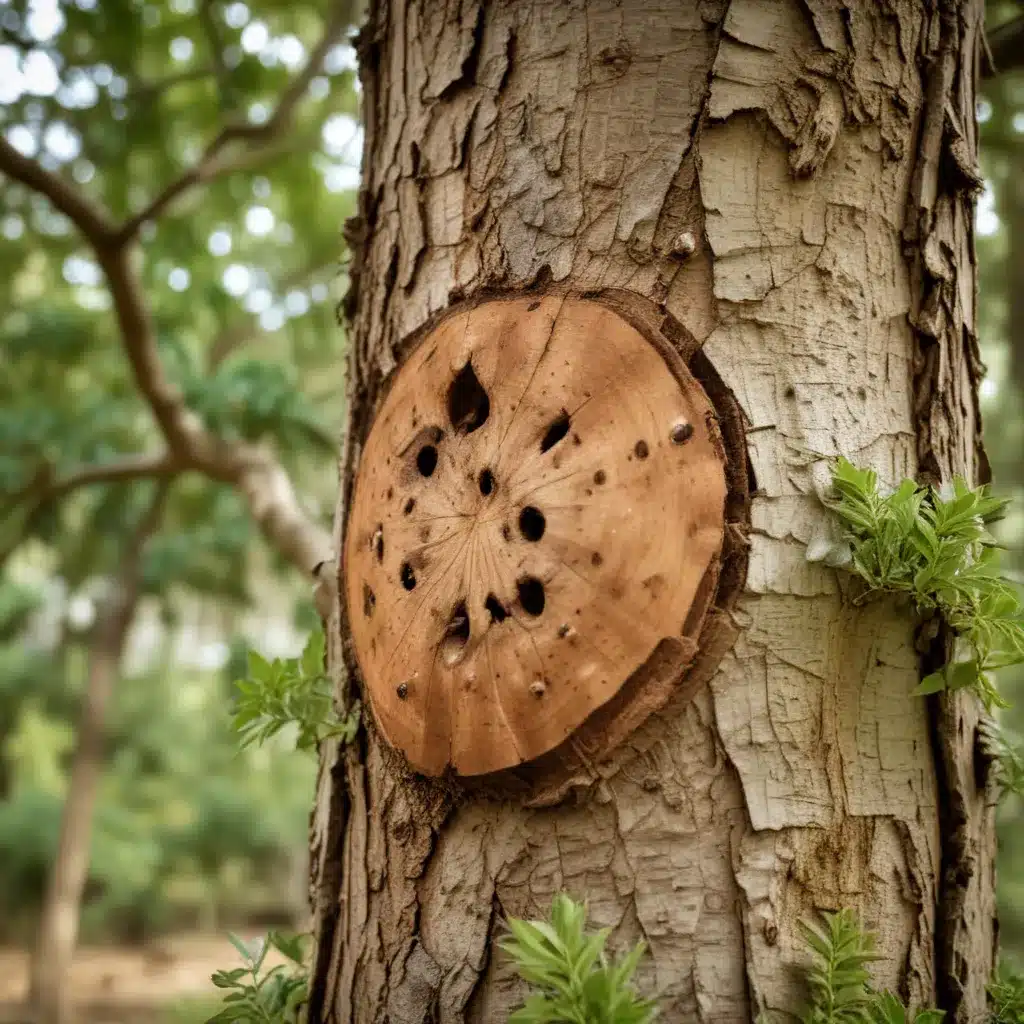
Integrated Pest Management for Preventing Tree Infestations
As a tree care specialist working in the subtropical conditions of South Florida, I understand the unique challenges homeowners and landscapers face when maintaining the health and resilience of their trees. From devastating hurricane seasons to persistent pest infestations, the local environment can test the limits of even the most seasoned gardeners. However, by adopting an integrated pest management (IPM) approach, you can proactively safeguard your trees and create biologically diverse, thriving landscapes.
Palm Maintenance
Palms, a quintessential element of the South Florida aesthetic, require specialized care to thrive. Proper pruning and trimming techniques are essential, as improper cuts can leave palms vulnerable to disease and pest issues. Aim to remove only dead, damaged, or dying fronds, leaving the healthy green portions intact. Time your palm maintenance to coincide with their natural growth cycles – typically in the spring and summer months.
Equally important is ensuring palms receive adequate irrigation and drainage. Most palm species prefer moist, well-draining soil, so monitor soil moisture levels regularly and adjust watering schedules accordingly. Identify and correct any drainage problems promptly to prevent the buildup of excess moisture, which can invite fungal pathogens and opportunistic pests.
Regular monitoring for signs of disease or infestation is a cornerstone of effective palm care. Inspect fronds, trunks, and root zones for indications of nutrient deficiencies, mites, borers, or other common palm pests. Caught early, many issues can be resolved through cultural controls or targeted treatments.
Tropical Storm Readiness
As a South Florida resident, you’re no stranger to the wrath of tropical storms and hurricanes. Preparing your trees for these powerful weather events is crucial to minimizing damage and promoting rapid recovery.
Begin by anchoring and staking young or vulnerable trees to provide additional structural support. This can involve the strategic placement of guy wires or the use of specialized tree supports. For mature specimens, consider thinning and shaping the canopy to reduce wind resistance and prevent excessive limb breakage.
Following a storm, carefully assess any damage and prioritize prompt repair. Prune away broken, hanging, or damaged branches to mitigate further issues. Monitor the tree’s response and look for signs of stress, such as wilting, dieback, or insect infestations, which may require additional intervention.
Local Soil Conditions
The sandy, nutrient-poor soils common to South Florida can pose a significant challenge for tree health. Regularly testing your soil and amending it with appropriate nutrients and organic matter is essential for supporting vigorous root growth and disease resistance.
Begin by conducting a thorough soil analysis to determine the pH, nutrient levels, and any deficiencies present. Armed with this information, you can create a targeted fertilization schedule using organic or slow-release synthetic options. Incorporate compost, mulch, or other soil enhancers to improve soil structure and water-holding capacity.
Addressing drainage issues is also crucial, as poor drainage can lead to root rot, nutrient imbalances, and susceptibility to pests. Consider strategies such as installing subsurface drainage systems or amending the soil with sand or other well-draining materials.
Pest and Fungal Issues
South Florida’s warm, humid climate provides an ideal breeding ground for a variety of tree pests and fungal diseases. Familiarize yourself with the most common culprits, such as borers, scale insects, aphids, and mites, as well as fungal pathogens like root rot and anthracnose.
Adopt an integrated pest management (IPM) approach to address these challenges. Begin by employing cultural controls, such as promoting beneficial insects, removing infested plant material, and adjusting irrigation and fertilization practices. If necessary, selectively apply targeted, low-impact pesticides or fungicides, always adhering to label instructions.
Early detection is key – regularly inspecting your trees and taking prompt action at the first sign of trouble can mean the difference between a minor issue and a full-blown infestation.
Fertilization Schedules
Maintaining the appropriate fertilization regimen is essential for the long-term health and resilience of your trees. In South Florida’s nutrient-depleted soils, a balanced, slow-release fertilizer applied at the proper timing and frequency can make all the difference.
Aim to fertilize your trees two to three times per year, coinciding with their natural growth cycles. Look for organic or slow-release synthetic options that gradually release a full spectrum of essential nutrients, including nitrogen, phosphorus, and potassium.
Avoid over-fertilizing, as this can lead to excessive vegetative growth, increased susceptibility to pests and diseases, and potential environmental impacts. Instead, rely on soil tests to guide your fertilization approach and tailor it to the unique needs of each tree species.
Planting Guidelines
When introducing new trees to your South Florida landscape, proper site selection and planting techniques are crucial for long-term success. Choose native or adaptable species that are well-suited to the local climate and soil conditions, and consider their mature size, form, and growth habits to ensure they complement your landscape design.
Prepare the planting site by loosening the soil to a depth of 12-18 inches and incorporating organic matter or other soil amendments as needed. Ensure the tree is planted at the correct depth, with the root flare visible at the soil surface. Provide ample water during the establishment phase, and consider the use of mulch to conserve moisture and suppress weeds.
Recommended Tree Species
Navigating the vast array of tree options for South Florida can be daunting, but certain species stand out for their disease and pest resistance, as well as their aesthetic and functional appeal. Consider adding native live oaks (Quercus virginiana), gumbo limbo (Bursera simaruba), or bald cypress (Taxodium distichum) to your landscape. For smaller spaces, crape myrtles (Lagerstroemia spp.) and sabal palms (Sabal palmetto) make excellent choices.
Ultimately, by adopting a comprehensive IPM approach and tailoring your tree care practices to the unique demands of the South Florida environment, you can cultivate a thriving, resilient landscape that withstands the test of time. For more personalized guidance on tree selection and maintenance, visit southfloridatrees.com.


